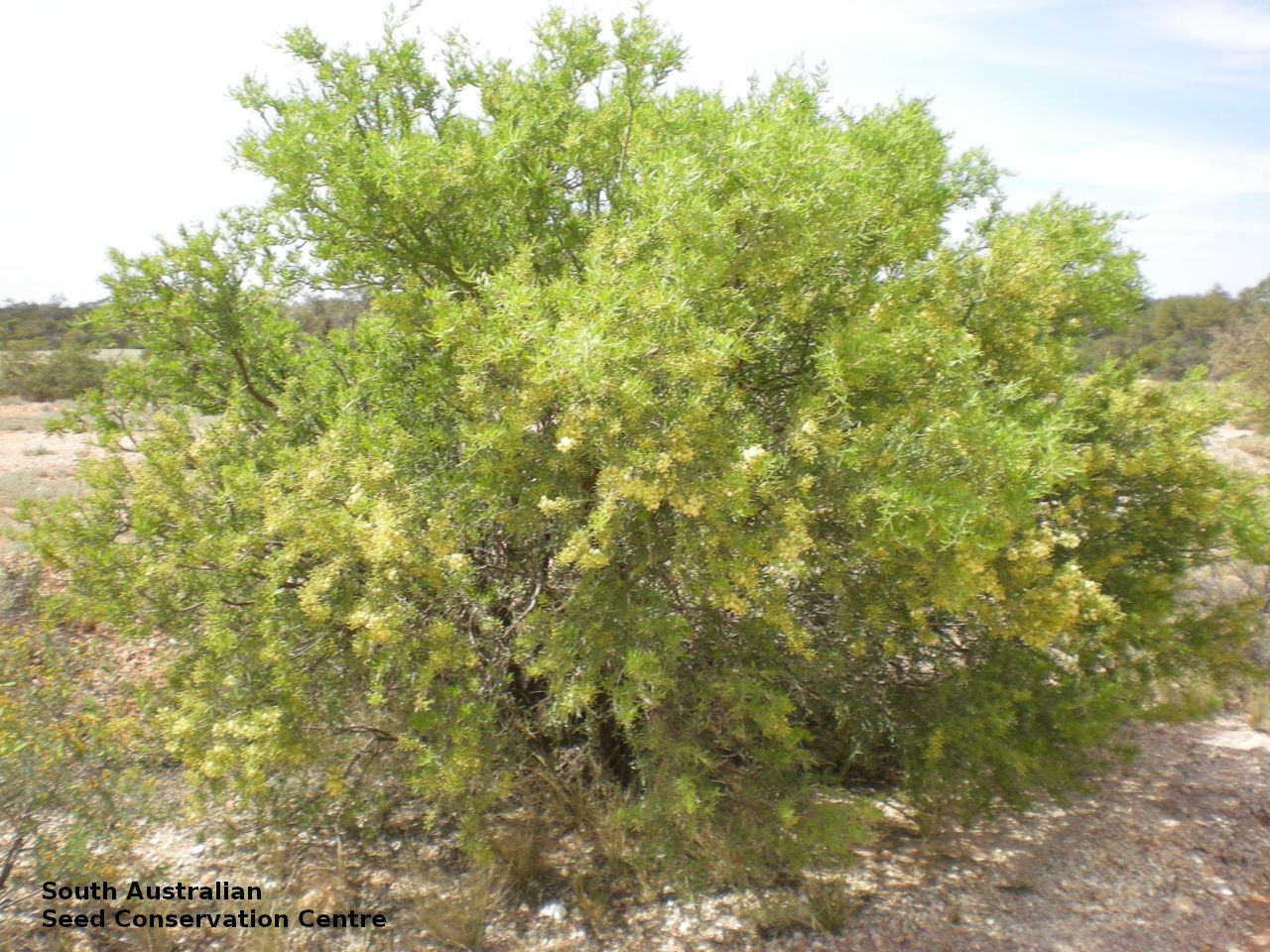
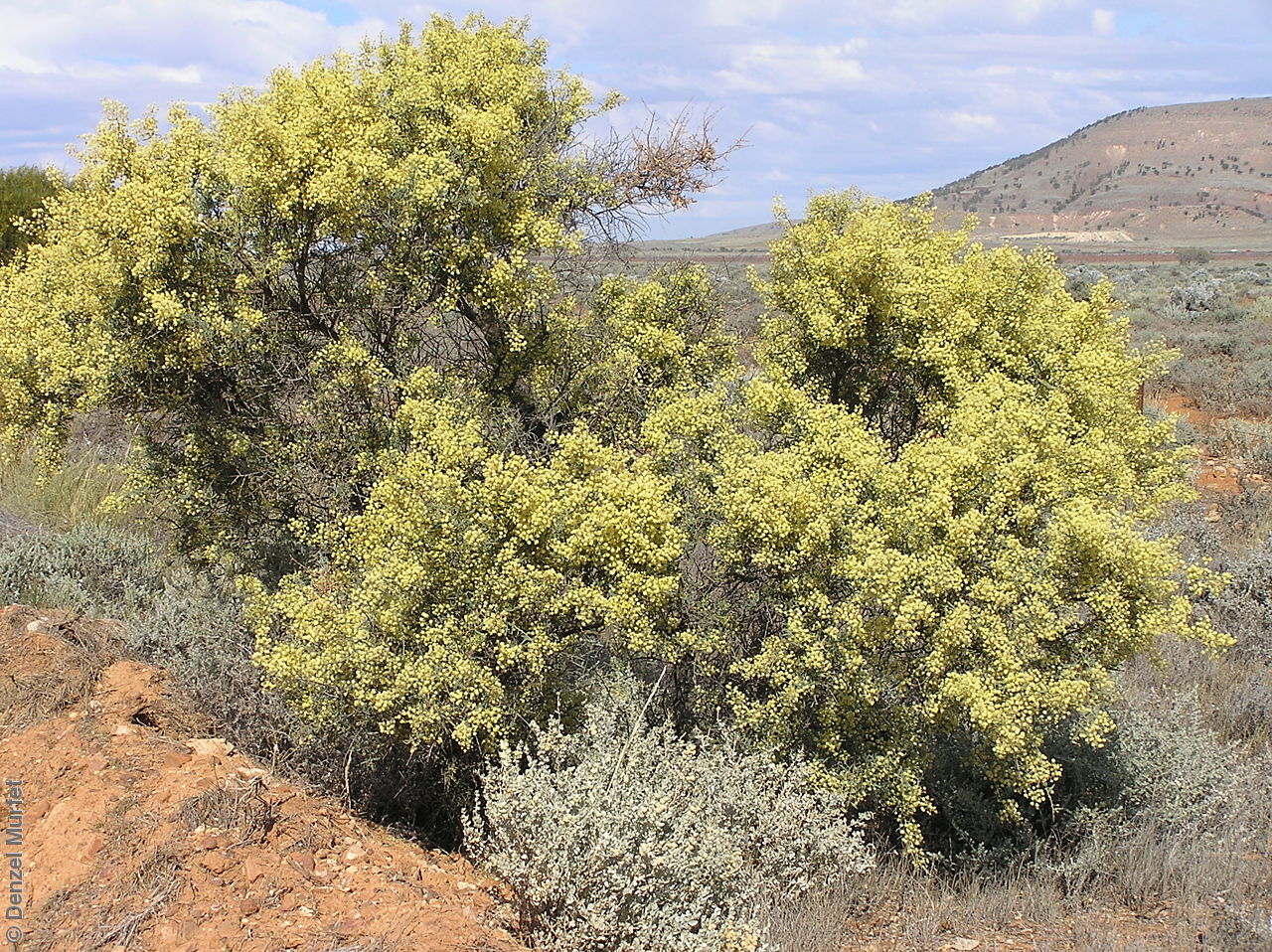
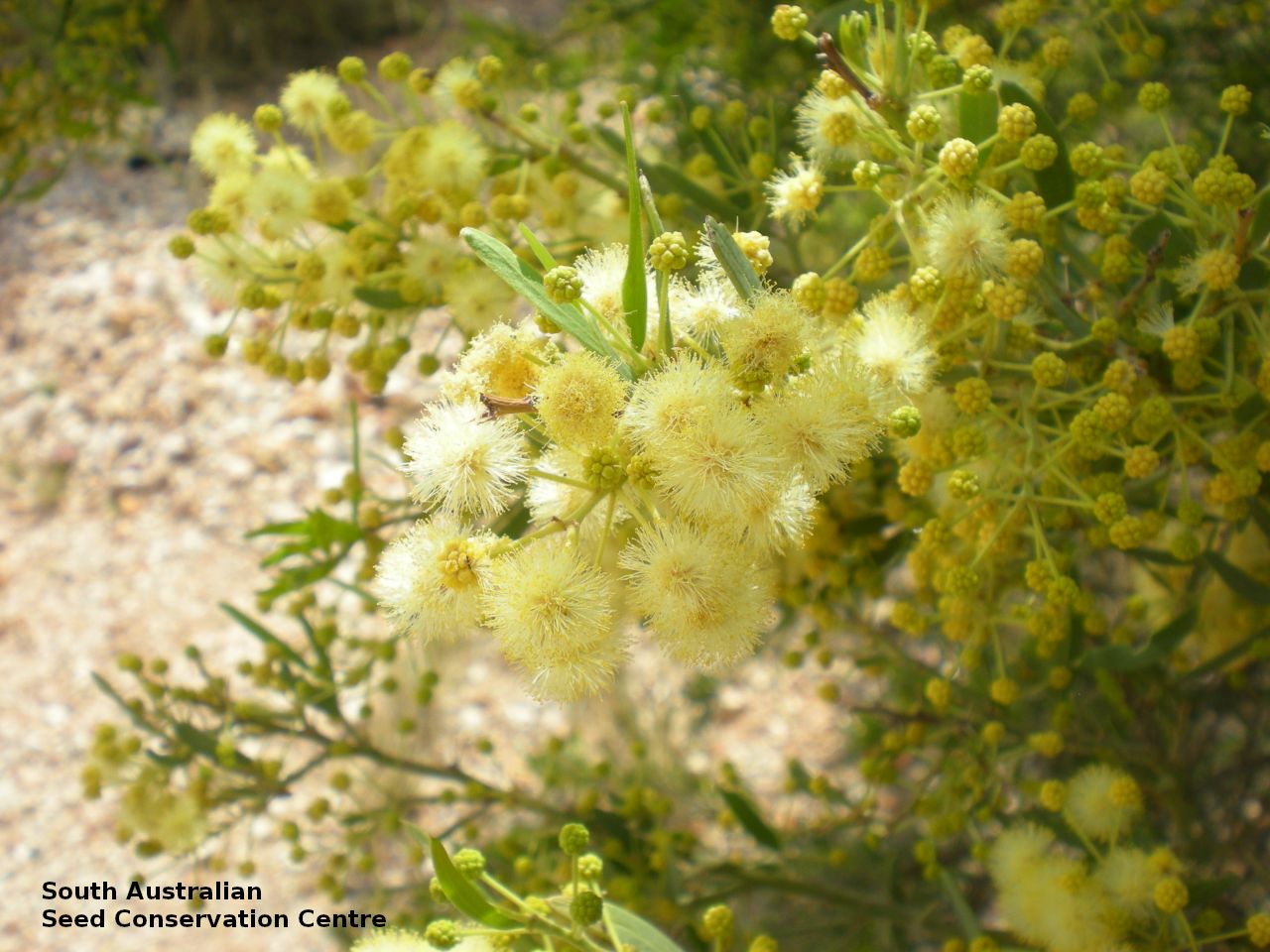
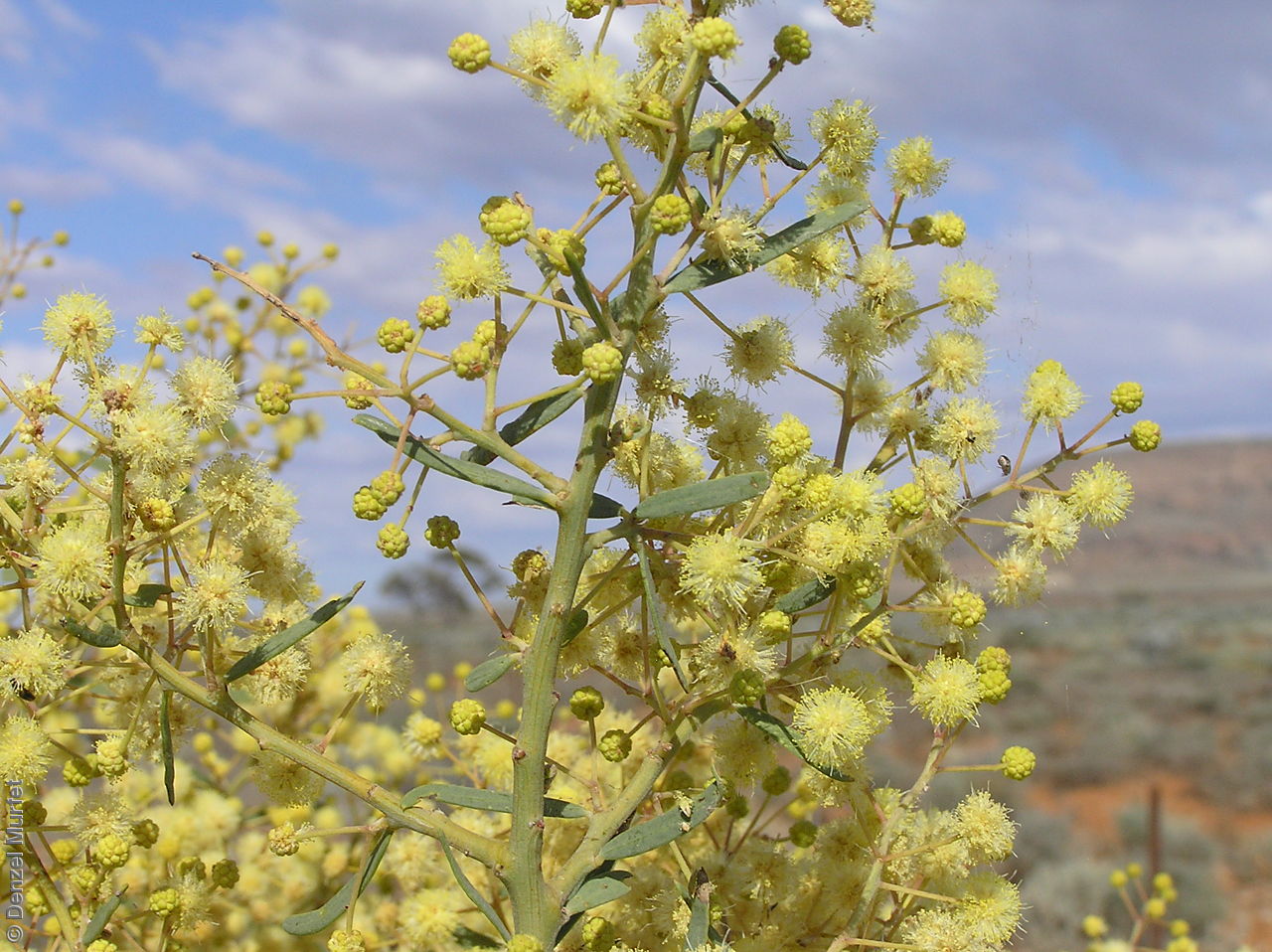
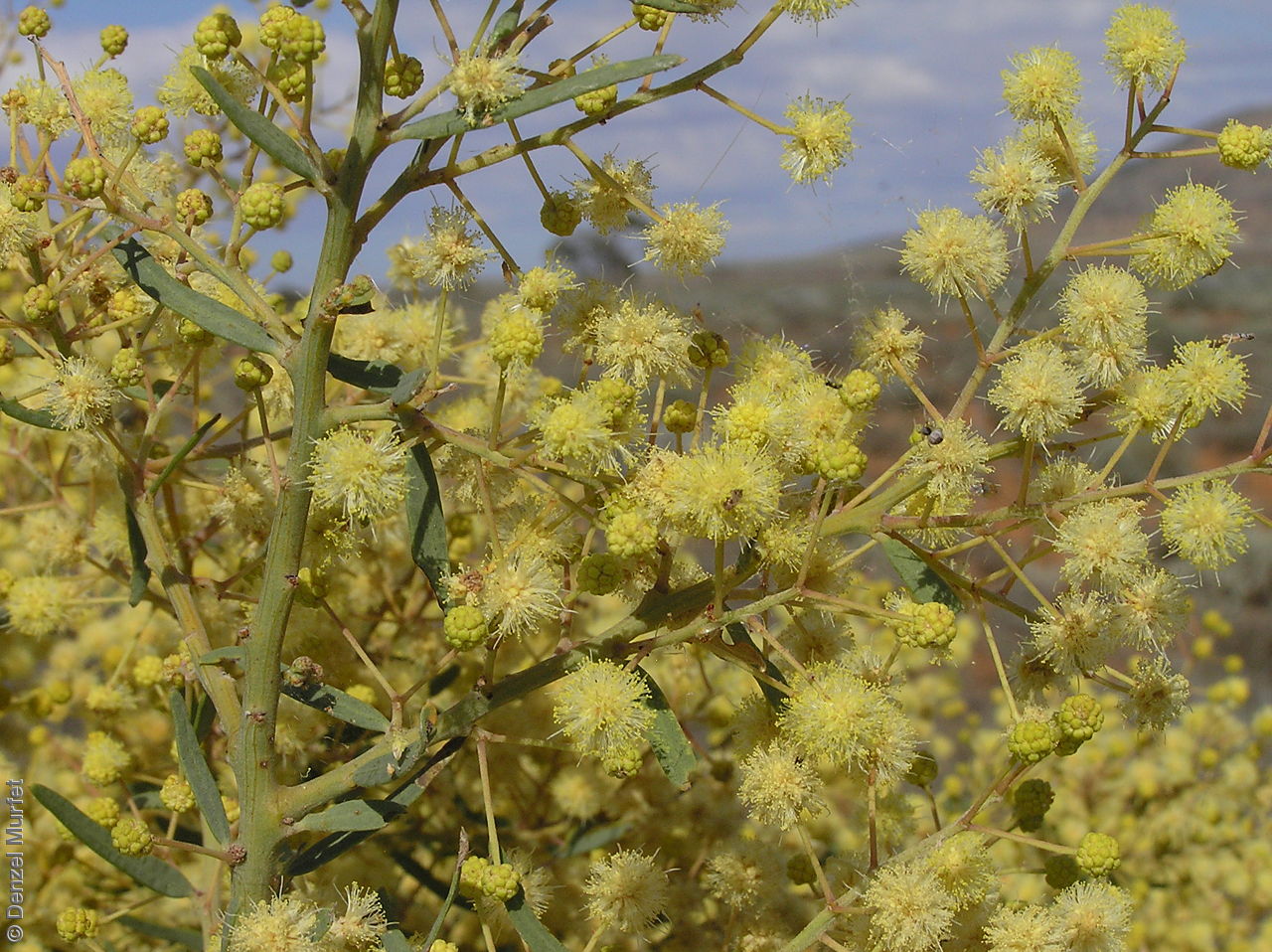
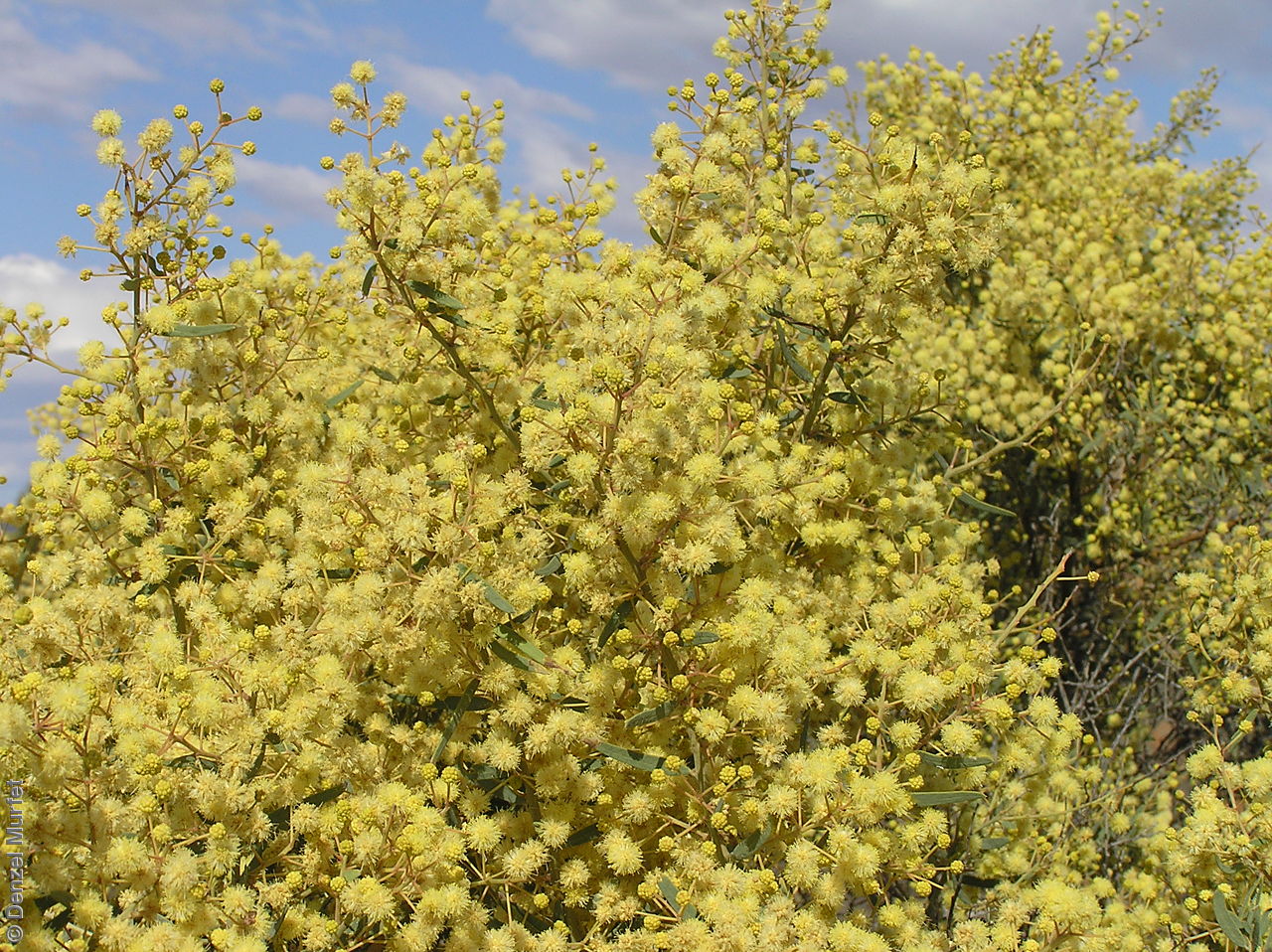
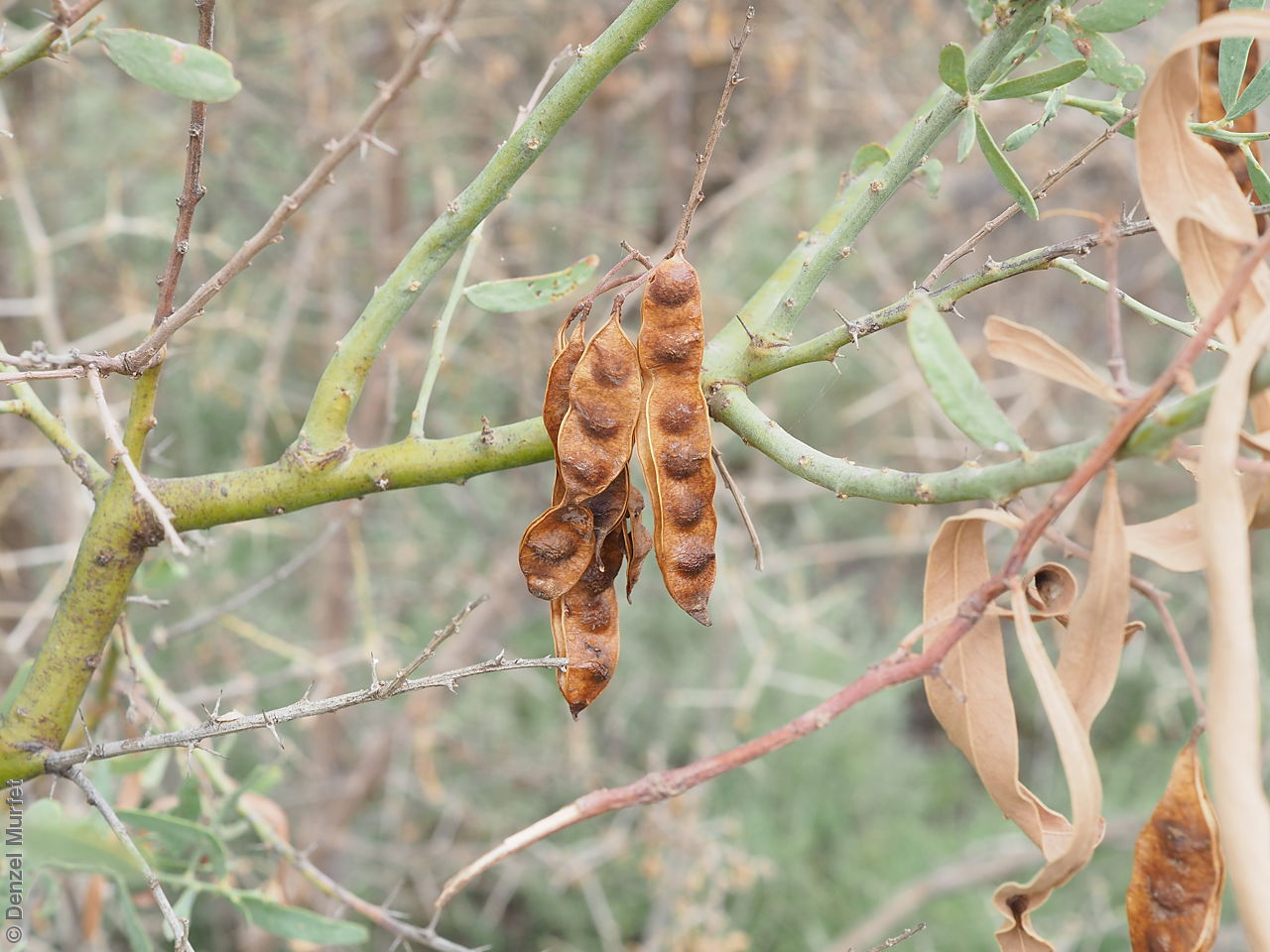
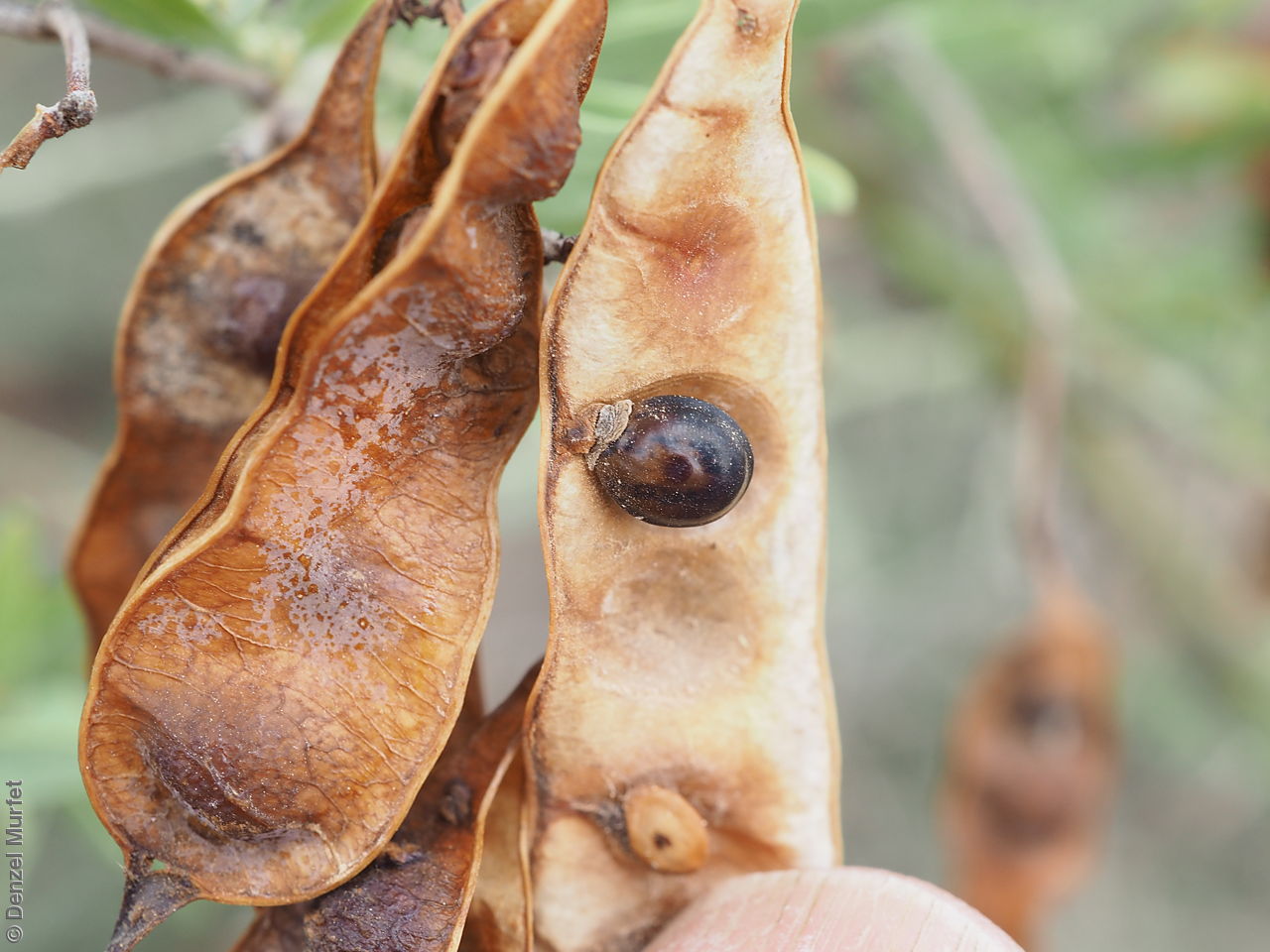
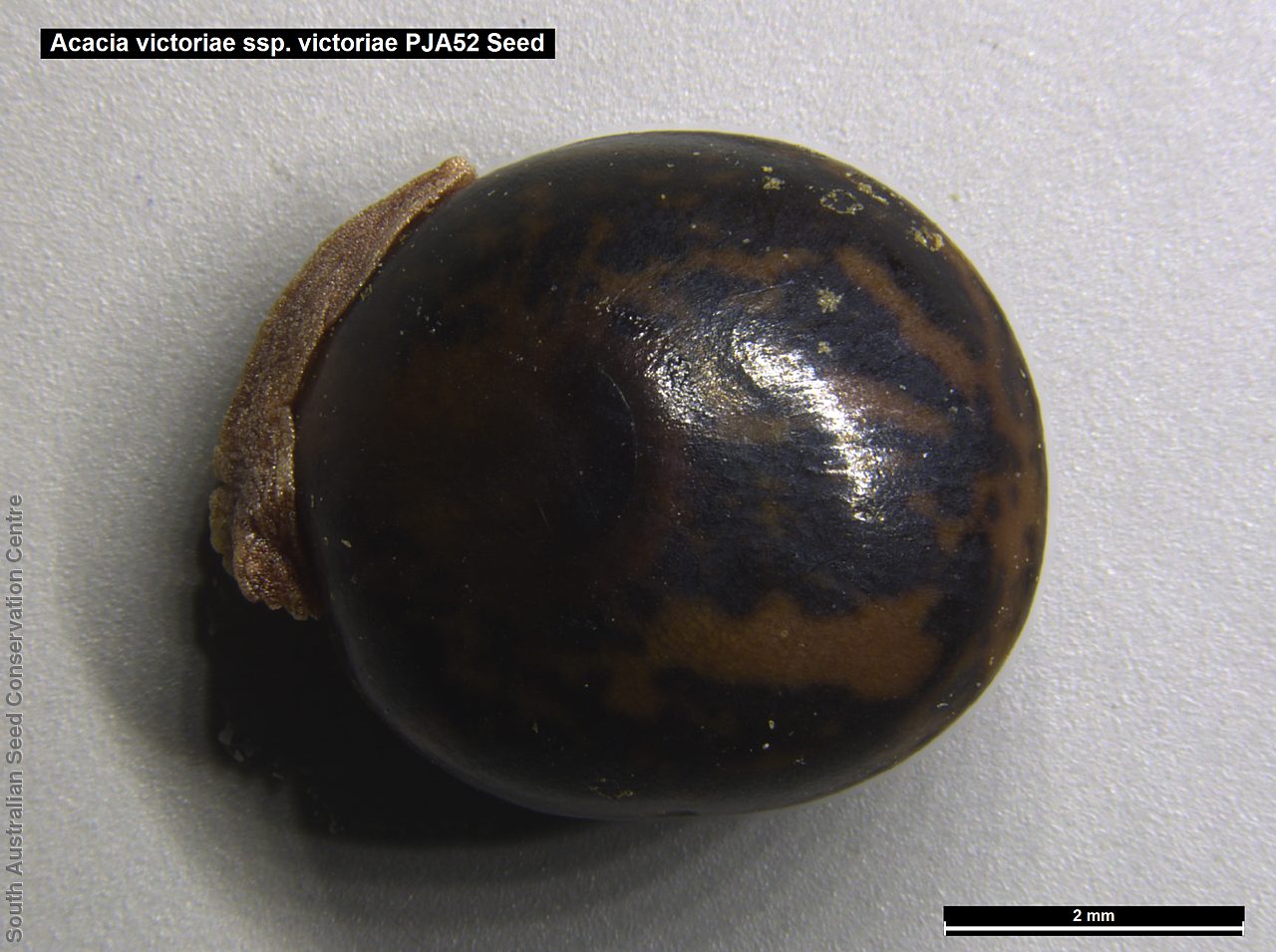
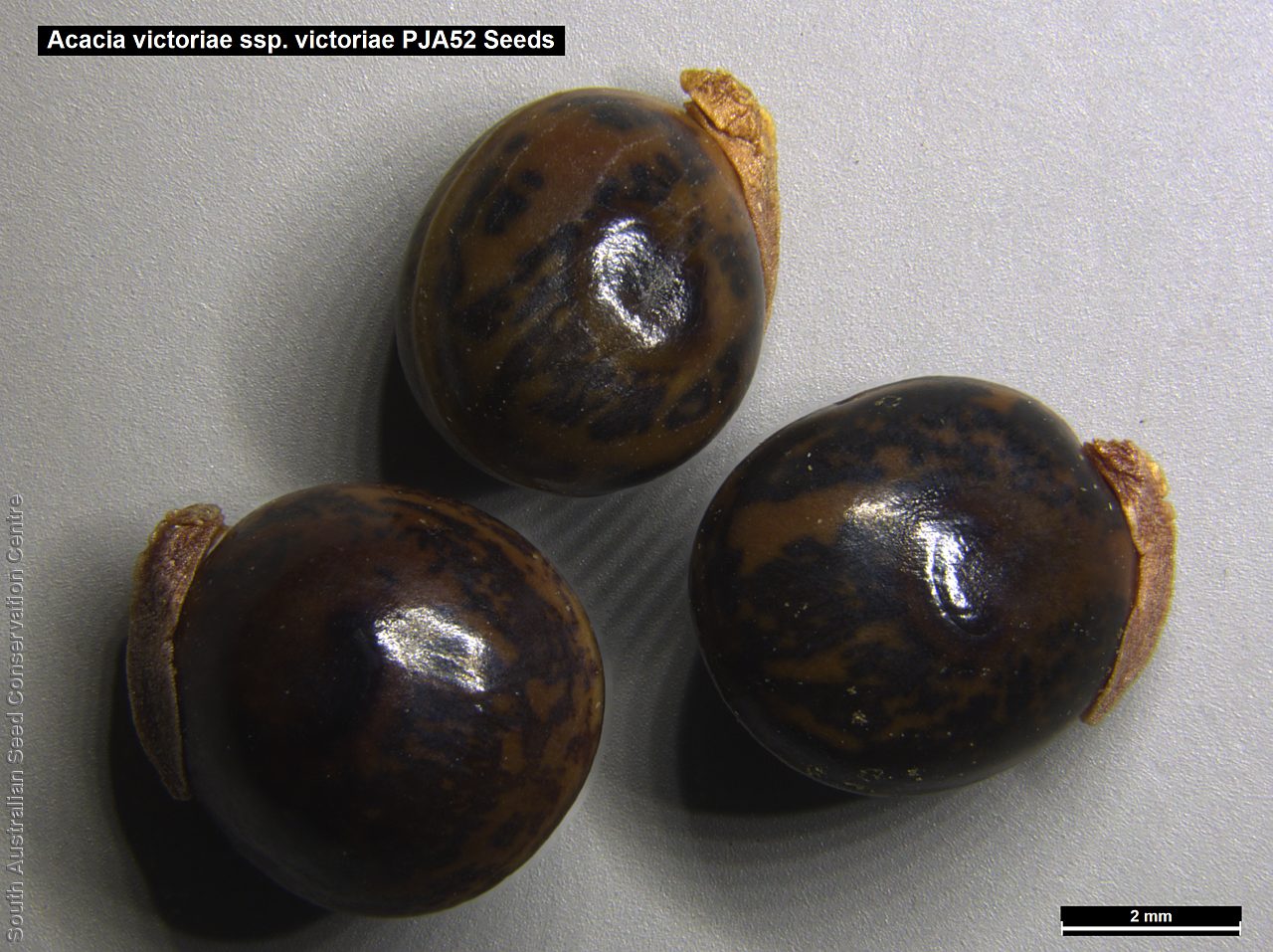


Botanical art
Prior names
Acacia decora
Acacia decora var. spinescens
Racosperma victoriae
Acacia sentis, nom.illeg.
Acacia coronalis
Common names
Elegant Wattle
Bramble Wattle
Etymology
Acacia from the Greek 'akakia' and derived from 'ake' or 'akis' meaning a sharp point or thorn and 'akazo' meaning to sharpen. Dioscorides, the Greek physician and botanist used the word in the 1st century AD for the Egyptian thorn tree, Acacia arabica. Victoriae refers to where the type specimen was collected, from Victoria River or upper Barcoo in Queensland, or to Queen Victoria, for whom the river was named.
Distribution and status
Widespread across South Australia from near Adelaide to the Flinders Ranges, growing in tall and low woodland on rocky hillsides, ridges and flats then extending to the north iand north-west parts of South Australia, growing in low shrubland and hummock grassland. Also found in Western Australia, Northern Territory, Queensland, New South Wales and Victoria. Native. Common in South Australia. Common in the other States.
Herbarium regions: North Western, Lake Eyre, Nullarbor, Gairdner-Torrens, Flinders Ranges, Eastern, Eyre Peninsula, Northern Lofty, Murray, Southern Lofty, South Eastern, Green Adelaide
NRM regions: Adelaide and Mount Lofty Ranges, Alinytjara Wilurara, Eyre Peninsula, South Australian Arid Lands, South Australian Murray-Darling Basin, South East
AVH map: SA distribution map (external link)
Plant description
Tall dense, thorny, much-branched shrubs to 5 m high, with smooth yellowish-green to grey bark, slightly fissured at the base of the trunk. Leaves flat, glaucous to light green, variable lanceolate-oblong, linear to broad-linear or more or less elliptical; straight or falcate to 5 cm long and 8 mm wide with one prominent central vein and inconspicuous lateral veins; apex acute or obtuse with a short straight or recurved mucro. Glands small, near base. Inflorescences axillary, solitary or mostly twin, or along elongated raceme axes, with globular pale creamy- yellow flower-heads. Differs from Acacia victoriae ssp. arida in having very hairy branchlets and leaves, whereas A. victoriae ssp. victoriae has hairless branchlets and leaves. Flowering between August and December Fruits are light brown, thin and papery, flattish, pod to 8 cm long and 13 mm wide; surfaces usually showing the outline of the seed with slightly thickened margins with some constrictions. Seeds are hard, globular dark brown mottled seed to 6 mm long and 4 mm across. Seed embryo type is investing.
Seed collection and propagation
Collect seeds between December and January. Collect mature pods that are turning brown, with hard, dark seeds inside. Be careful when collecting pods, as plants can be long spined. Place the pods in a tray and leave to dry for 1-2 weeks or until the pods begin to split. Then rub the dried pods to dislodge the seeds. Use a sieve to separate any unwanted material. Store the seeds with a desiccant such as dried silica beads or dry rice, in an air tight container in a cool and dry place. This species has physical dormancy that needs to be overcome for the seed to germinate (e.g. nicking or softening the seed coat).
| Location | No. of seeds (weight grams) | Number of plants | Date collected | Collection number Collection location | Date stored | % Viability | Storage temperature |
|---|---|---|---|---|---|---|---|
| BGA MSB | 1,554 (82.3 g) 1,554 (82.3 g) | 23 | 3-Dec-2003 | PJA52 North Western | 1-Sep-2004 | +5°C, -18°C |
Number of plants: This is the number of plants from which the seeds were collected.
Collection location: The Herbarium of South Australia's region name.
% Viability: Percentage of filled healthy seeds determined by a cut test or x-ray.